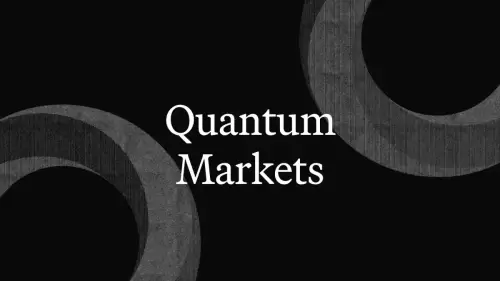 |
|
 |
|
 |
|
 |
|
 |
|
 |
|
 |
|
 |
|
 |
|
 |
|
 |
|
 |
|
 |
|
 |
|
 |
|
Cryptocurrency News Articles
If You Find These Dimes in Your Piggy Bank, You Could Be Sitting on a Small Fortune
Apr 26, 2025 at 10:39 pm
A quick check of your piggy bank or car cupholder may reveal a relatively standard stash of coins: pennies, dimes, quarters, a car wash token.

A quick check of your piggy bank or car cupholder may reveal a relatively standard stash of coins: pennies, dimes, quarters, a car wash token. While it may not amount to much at the outset, some of those dimes could be worth far more than their minted value.
The U.S. has been producing dimes for more than 200 years, thanks to the Coinage Act of 1792.
Multiple iterations of dimes have been minted throughout the years. Early versions contained designs of Lady Liberty, which later gave way to a bust of President Franklin D. Roosevelt in 1946. The change came shortly after his death and paid tribute to his support of the March of Dimes.
Dimes contained silver until 1965 when the U.S. Mint changed the 10-cent piece’s composition to a copper-nickel clad.
Like other coins and currency, the design, age, and material can determine whether the dime you just found in the couch is worth more than its intended value.
Auction records from Heritage Auctions show a dime minted in 1873 sold in 2023 for $3.6 million, the largest price paid for a 10-cent piece on the company’s website. This dime was part of a group assigned to be melted as part of the Coinage Act of 1873 and is believed to be the “sole survivor” of its time.
Several “Barber dimes” have been known to seven figures at auction. Named after the engraver who designed them, Charles E. Barber, these dimes were produced starting in the 1890s. While dimes with Barber’s design have sold for hundreds of dollars, according to Numismatic News, those struck in San Francisco in 1894 are especially sought after.
Why? Because records show only 24 were made in the Bay Area. According to Heritage Auction, only nine may be known to exist today. One such dime sold for $2.16 million in January, Heritage Auction’s records show. It previously sold for nearly $1.998 million in 2016.
Another Barber dime sold in 2020 for $1.5 million, according to the company’s website. The same coin went for $1.035 million in 2005.
Dimes — or “dismes,” as they were referred to at the time — produced in 1792 have also sold for eye-popping prices at auction. There are just three known to exist to collectors, Heritage Auction explains, with the “finest-known example” selling for nearly $999,000 with the auctioneer in 2016. It is believed the lack of dimes (or any other coins) minted in the early 1790s was due to the Mint being “engaged in experimenting.” It wasn’t until the middle part of the decade that it became more operational.
That makes dimes from 1796, the first year they were made for circulation, also valuable to collectors. One such example sold for $750,000 in 2020.
A much newer, and vastly rarer, dime also sold last year — but for much less.
Minted in 1975, the dime looked much like others from the time period, except it was missing its mint mark. (Coins are marked with either a “D,” “P,” or “S,” denoting that they were minted in Denver, Philadelphia, or San Francisco, respectively.) It’s only one of two known to exist without its “S” mint mark.
It sold for over $500,000 at auction. Its twin sold for nearly $350,000 in 2011, according to Stack’s Bowers. It sold again in 2019 for $456,000 and then again months later to a private collector.
Other dimes missing their mint marks have sold for upwards of $22,000, Stack’s Bowers shows. Though most, according to a report from GOBankingRates, tend to sell for a few hundred dollars.
The Barber dime’s successor, dubbed the Mercury dime, has been especially sought out by collectors. Thousands were released between roughly World War I and the end of World War II, tacking on an interesting historical significance to the dimes.
Despite their name, dimes from this era neither contain mercury nor do they depict Mercury, the Roman god. The dime — 90% silver, 10% copper — instead features a winged Lady Liberty. Nonetheless, the mistaken Mercury moniker has stuck with the dime.
While
Disclaimer:info@kdj.com
The information provided is not trading advice. kdj.com does not assume any responsibility for any investments made based on the information provided in this article. Cryptocurrencies are highly volatile and it is highly recommended that you invest with caution after thorough research!
If you believe that the content used on this website infringes your copyright, please contact us immediately (info@kdj.com) and we will delete it promptly.
-

-

-

- Ethereum Treasury Strategy Firms May Go the Same Way as ETH Exchange-Traded Funds (ETFs)
- Jun 13, 2025 at 12:15 pm
- Andrew Kang, a leading cryptocurrency market analyst and partner at crypto investment platform Mechanism Capital, has warned that Ethereum Treasury Strategy firms may go the same way as the ETH exchange-traded funds (ETFs) – a wave of excitement followed by underwhelming success.
-

-

- A Global Ripple Just Emerged in the Crypto Sphere: New Interoperability Protocols and Blockchain Upgrades Are Driving a Fresh Wave of Excitement
- Jun 13, 2025 at 12:10 pm
- This article highlights the best crypto coins to buy for 2025, selected for robust fundamentals, technical breakthroughs, and ecosystem relevance.
-

-

-

- Trump Won't Fire Jerome Powell
- Jun 13, 2025 at 12:05 pm
- US President Donald Trump has finally broken his silence on the rumors about firing the Fed Chair Jerome Powell. Trump revealed that he has no plans to do so amid reports that US Treasury Secretary Scott Bessent or former Fed Governor Kevin Warsh could replace the Fed Chair.
-

- Hyperliquid Continues to Outperform the Market, Rallying Again After Unit Spot Token Infrastructure Founder Reveals Two New Tickers
- Jun 13, 2025 at 12:00 pm
- HYPE rallied another 5% after the post, extending the token's gains to more than 20% over the last week, with HYPE approaching $44 before retracing.




























































